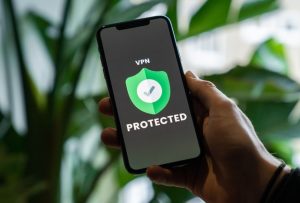The introduction of Incognito Mode has revolutionized the way we browse the internet. It allows us to keep our online activity private from other people who use our device, and it prevents web tracking. When you open a new incognito window, your browser will not record any cookies or browsing history. This means that you won’t get targeted ads or suggestions based on your previous searches. To access Incognito Mode, open Chrome and tap the three dots at the top-right corner of the screen. Then select “New incognito tab” to open up a new window in private mode. Once you’re done browsing, make sure to close all incognito windows so that no trace of your activity is left behind on your device.
Although Incognito mode provides some level of privacy when browsing online, it’s important to understand its limitations as well as how to set up secure passwords for added protection against web tracking and malicious actors. While using this mode can help protect you from targeted ads and suggestions based on your previous searches, it doesn’t guarantee complete privacy or prevent web tracking altogether – so it’s important to take additional steps such as setting up strong passwords for extra security measures when using this feature. With these tips in mind, you can safely use Incognito Mode without worrying about compromising your personal information or leaving traces behind on your device!
What Is Incognito Mode?
Incognito mode is a private window in your web browser that allows you to browse the internet without leaving any trace of your activity. It prevents your activity from being tracked and stored by your browser, giving you a greater degree of privacy and security. All of today’s major web browsers offer incognito mode, so no matter what device or browser you’re using, you can take advantage of this feature.
When browsing in Incognito mode, none of the data from your session will be saved on either the device or to any Google Account that you are signed into. This means that when all incognio tabs are closed, there will be no record left behind for anyone else to see what websites were visited during the session.
Using Incognito Mode does not provide complete anonymity online; it simply prevents certain information from being stored on the device or account used for browsing. It is important to remember that while using Incognio Mode may help protect some personal information from being tracked and stored by browsers, it does not guarantee complete privacy online as other parties such as ISPs may still have access to certain data related to browsing activities.
Despite its limitations, Incognito Mode can still be a helpful tool for keeping personal information safe and secure while surfing the web. By taking advantage of this feature offered by most major browsers today, users can enjoy greater peace-of-mind knowing their activity won’t be tracked or stored on their devices or accounts they are signed into while they browse privately in incognito mode.
Understanding the Limitations of Incognito Mode
Understanding the Limitations of Incognito Mode is essential for safe browsing. While Incognito Mode can protect your browsing activity and data from being tracked and stored, it won’t protect you from being tracked and monitored by websites, your internet service provider (ISP), or other third-party services. Additionally, it won’t protect you from malware or viruses, or prevent your information from being exposed if you’re using an unsecured Wi-Fi network.
When using Incognito Mode, your online activity is protected in that fewer targeted ads and suggestions will be shown to you. However, each time you close all incognito windows on a device, any cookies created while in this mode are deleted. The biggest disadvantage of incognito mode is that your IP address, identity, and browsing activity are still visible to third parties. As a result of this limitation of privacy protection offered by incognito mode, it’s important to be aware of what it hides and erases as well as what remains visible when using this feature.
Google doesn’t save search history when in Incognito Mode so future searches won’t be influenced by the terms used previously; however this does not guarantee private browsing or prevent web tracking since certain aspects such as IP address remain visible to third parties even when using private mode. It’s also important to note that while no trace of online activity will remain on the browser after closing all windows in Incognito Mode; any downloaded files will still remain on the device unless manually deleted afterwards.
In conclusion understanding the limitations of Incognito Mode is key for safe browsing since although certain aspects such as search history may not be saved; other factors such as IP address may still be visible to third parties which could lead to potential tracking or monitoring depending on how secure one’s connection is at any given time.
Setting Up Secure Passwords
Creating secure passwords is an essential step to protect your online activity. It’s important to use a unique and complex password for each website you visit, and a password manager can help you keep track of them all. Additionally, two-factor authentication (2FA) should be enabled on any websites that offer it, as this will add an extra layer of security to your accounts.
Creating strong passwords can be difficult when you have numerous accounts to manage. Fortunately, there are several tools available that make it easier for users to generate and store long, unique passwords for all their online accounts. Password managers such as LastPass or 1Password are great options as they provide features like generating secure passwords, monitoring accounts for security breaches, suggesting changing weak passwords and syncing your passwords between devices.
Google also recommends creating a strong password in order to protect your account from unauthorized access. A strong password should include at least 8 characters with a combination of upper case letters, lower case letters numbers and symbols if possible. Using a password manager makes it easier by allowing users to remember only one master password which unlocks all the other stored credentials in the system securely.
By following these steps you can ensure that your online activity is protected with secure passwords and two-factor authentication (2FA). This will give you peace of mind knowing that no one else has access to your personal information or data stored on various websites or applications without authorization from yourself first!
Using a VPN
Using a VPN is an effective way to protect your online activity and privacy. It encrypts your data, making it much more difficult for hackers and other third-party services to access your information. Additionally, a VPN can make it easier to access geo-restricted content by making it appear as though you’re accessing the internet from a different location.
VPN stands for “virtual private network” and works by connecting your computer or other internet-enabled devices to a server. This creates a secure, encrypted connection that masks your device’s IP address and routes all of your browsing activities through far-away servers. By doing this, you are able to give yourself more privacy and anonymity while online.
The encryption provided by VPNs makes it much harder for third parties such as hackers or government agencies to break in and steal any of the data that is being sent over the network. This means that even if someone were able to intercept the traffic they would not be able to read or understand what was being sent due to the encryption process used by most VPNs today.
Using a VPN also allows users access geo-restricted content which may otherwise be blocked in their region due its location restrictions set up by certain websites or services providers. By using a VPN, users can make it appear as though they are accessing the Internet from another country which will allow them access these restricted sites without any issues whatsoever.
Overall, using a virtual private network is an effective way of protecting yourself online while also allowing you access geo-restricted content with ease – all without sacrificing any of your personal information in the process!
Staying Safe on Public Wi-Fi
Using public Wi-Fi can be a great way to stay connected on the go, but it can also be a dangerous place. Security experts have long advised people to avoid using public WiFi networks because of the risk of being hacked. If you do need to use public Wi-Fi, make sure to take extra precautions. The biggest threat to free Wi-Fi security is the ability for the hacker to position himself between you and the connection point. So instead of talking directly with your intended destination, your data passes through an intermediary who could potentially intercept it.
A great way to minimize public Wi-Fi security risks is to use a virtual private network (VPN). By using a VPN on public Wi-Fi, you’re accessing an encrypted tunnel that keeps your data secure from prying eyes while in transit. This means that even if someone does manage to intercept your data, they won’t be able to read it without breaking through layers of encryption first. Some people may want to use a virtual private network (VPN), but it’s not necessary for everyone. If you frequently connect to public Wi-Fi or access sensitive accounts or data online, then investing in a VPN is highly recommended as an added layer of protection against hackers and other malicious actors online.
One of the best ways to keep your information safe on public Wi-Fi is by investing in a virtual private network (VPN). Better known as a VPN, it creates an encrypted tunnel between two points so that all traffic passing through remains secure and unreadable by anyone else who might try and intercept it along its journey from one end point back out again at another end point – like when connecting from home or work back out onto the internet via free WiFi hotspots at cafes or airports etc.. A VPN will also help protect against man in middle attacks where hackers attempt gain access by positioning themselves between two points on either side of any given connection – such as when connecting from home or work back out onto the internet via free WiFi hotspots at cafes or airports etc..
Conclusion
In conclusion, Incognito Mode can be a helpful tool for protecting your online activity, but it is important to understand its limitations. To ensure your data stays safe and secure, make sure to use secure passwords, enable two-factor authentication and use a VPN when accessing public Wi-Fi. Additionally, log in or send personal information only to websites you know are fully encrypted and follow these simple steps to lock down your devices and accounts. While Incognito Mode leaves no trace of your online activity on the browser, it does not guarantee private browsing or prevent web tracking. Therefore, it is important to remember that local data will not be stored when using this mode of browsing.




Be First to Comment